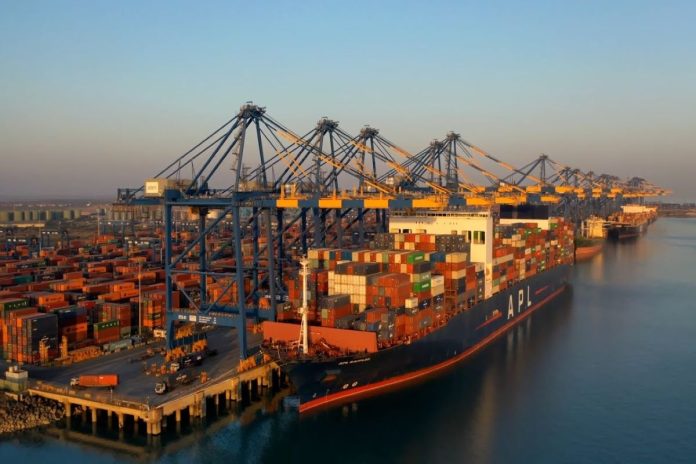On the Arabian Sea: ‘Dolphin 13, South Basin 7, its Captain Ratan Singh proceeding to boarding, Bravo.’
‘Yes proceed for boarding, Bravo.’
This was the precise communication at around 12.30pm between the crew of Safeen Power, the large ship with container goods, approaching the port and the Dolphin 13, the tug boat in the Gulf of the Kutch at Mundra Port.
In between, there were constant instructions from Mundra Port Control for both vessels.
By 12.35pm Captain Ratan Singh boarded the Safeen Power through the support system of a staircase to steer the large ship to berth at the Mundra terminal.
However, Dolphin 13 was not alone, there was another tug boat, Dolphin 14, also deployed in the rear side of the ship to bring Safeen Power to the terminal.
The Safeen Power ship was finally berthed at South Basin Jetty-7 at about 2.05pm after constant manoeuvring and communication with the two tug boats and the ship. Safeen Power was berthed behind MSC Jemima ship.
After the docking of Safeen Power, Captain Ratan Singh returned to Dolphin 13 as the tug boat was heading further to bring another ship to the Mundra Port terminal.
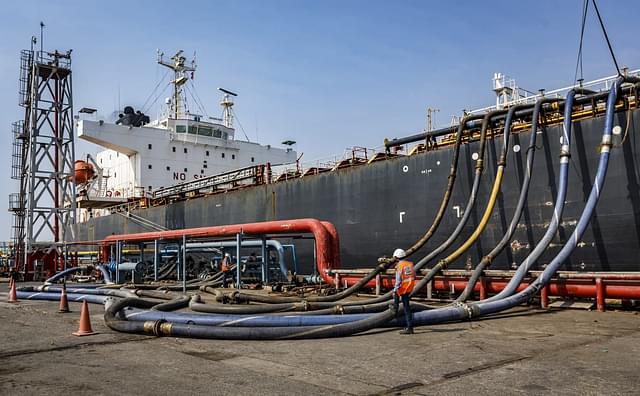
This is the system followed at the port for docking the ship at the terminal, as the incoming ship crew are not aware of the topography and various other local conditions like under-current and depth of the sea.
So it is the responsibility of the port authorities to bring the ship at the terminals, so these tug boats are being deployed round the clock at the port, said Captain Singh, a veteran seafarer, who is in the job for many years.
The tug boat — with about 10 crew members — including chief engineer, master and second master, oiler, maintenance staff and a cook, plays a crucial role in berthing of a heavy ship at the port.
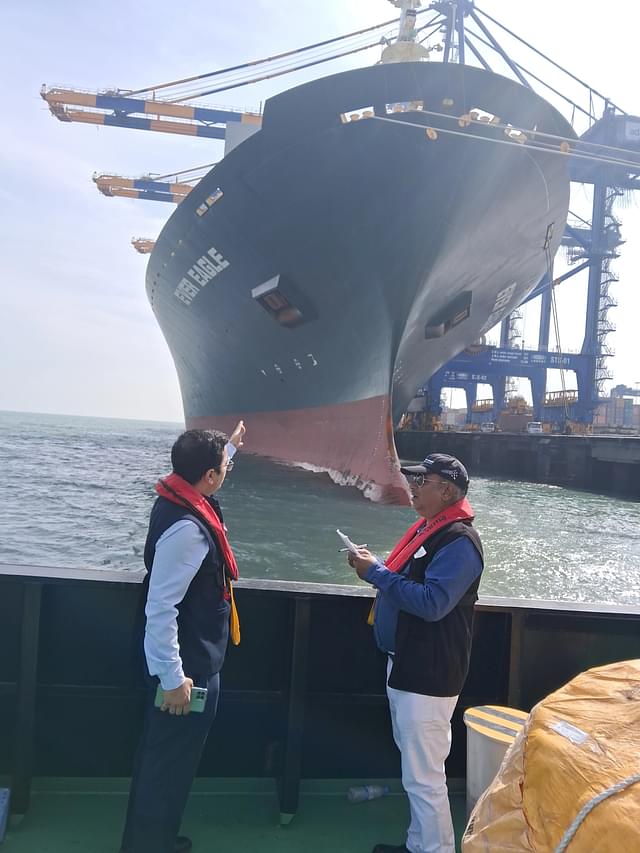
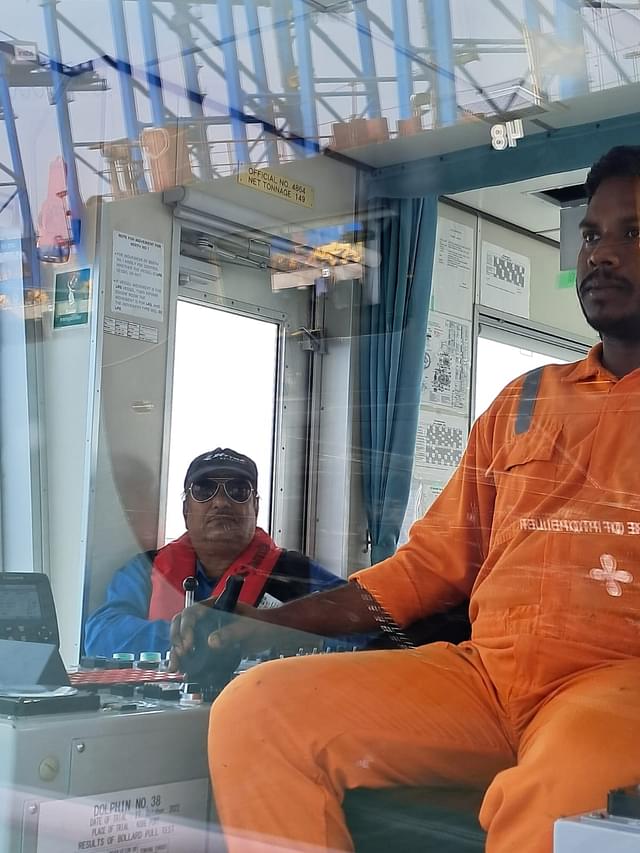
Sukanta Jena, the second master who was on the driver seat, said the job is “exciting as we play an active role in berthing of heavy ship at the port.”
Meanwhile, the Safeen Power is getting ready for loading and unloading with all the cranes swinging into action.
“The turnaround time at this port is between 3 hours to 15 hours — depending upon the volume of cargo as we try to finish the loading and unloading very fast,“ said a senior Mundra Port staff involved in the job for the last five years.
It was in the year 1998, on 7 October, when the first vessel from Singapore berthed at the newly constructed Mundra Port. Since then much water has flown down the Gulf of the Kutch and the most modern port with state-of-the-art machineries is handling about 40 ships a day, at the 30 cargo terminals present at Mundra in Gujarat.
Since berthing its first ship, MT Alpha, the port has consistently demonstrated a visionary approach, unwavering ambition and impeccable execution, positioning itself as one of the premiere and technologically advanced ports on the global map.
Spreading over 35,000 acres, Mundra Port serves the vast northern hinterland with seamless multimodal connectivity.
As the nation’s largest commercial port, Mundra boasts of state-of-the-art facilities, including the largest coal, natural gas, and auto terminals. Its deep draft and all-weather capabilities ensure efficient cargo evacuation and minimal turnaround time.
The port has capacity of handling all dimensional cargo like locomotives and helicopters among others.
In order to ensure seamless connectivity, Mundra Port has constructed a 210-km-long electrified rail line which connects to Adipur near Gandhidham in Western Railways.
Besides, it also has LNG and LPG terminal facilities for import purposes.
One can also see the loading of heavy utilities pipes, meant for Saudi Arabia for its Line City.
Its strategic advantages and superior facilities have made it the preferred choice for major global shipping lines.
An infrastructural marvel, the mega port at Mundra is a major economic gateway and coming from Ahmedabad by road, one can realise that they are approaching Mundra as they see the continuous flow of heavy trucks all over.
From a handful of tonnes in 1998, Mundra went on to handle 100 million metric ton (MMT) in 2014 — the first in India to do so. Today, the port handles over 155 MMT, which constitutes nearly 11 per cent of India’s maritime cargo.
“We have reached the capacity of 157 MMT in a year till now and aiming to reach 200 MMT in this fiscal,“ said a senior executive of the Mundra Port.
Mundra is also the EXIM gateway for container traffic. In fact, 33 per cent of India’s container traffic flows through the port across a dedicated freight corridor that offers the unique facility of double-stack containers from the northern hinterland to Mundra.
The port is equipped with separate jetty for steel, coal, automible containers, dry cargo such as salt, minerals, fertiliser and medicines, among others.
The multi-commodity and all-weather port has a floating roll on-roll off jetty for transporting automobiles. The jetty goes up in the high tide and comes down in the low tide and irrespective of tide, loading of the vehicles continues.
Emerging as a crucial trade gateway, Mundra Port has grown into a multimodal hub that drives trade and fortifies economic progression. From its modest inception, it has ascended to prominence and has contributed over Rs 2.25 lakh crore to the state and national exchequer in the past 25 years, emphasising its central role in India’s economic framework. Additionally, it has generated employment exceeding 7.5 crore man-days since inception.
Mundra boasts of state-of-the-art facilities including the largest coal, natural gas, and auto terminals. Besides, mechanised semi-automatic bagging plant for fertilisers to bag and load 25,000 MT of bulk fertilisers per day and dispatch to upcountry for distribution.
It also has dedicated agri-zone and agri-park away from Port area, for storage and bagging of food grade edible cargoes.
Mundra Port has been at the forefront of eco-conscious activities, from green initiatives to sustainable operational methods. It has undertaken mangrove afforestation and conservation that encompasses terrestrial afforestation across approximately 6,000 hectares, planting 17.5 million plants.
There are plans to plant an additional four million trees by 2030, said the Port executive.
There are about 300 trucks, known as internal transfer vehicles, meant for cargo movement in the port, now running on electric power system. The aim is to sustain port operation in green energy to achieve zero carbon emission by 2030.
There are facilities like complete covering of cargo during monsoons and the port is capable of handling post-panamax and capsize vessels.
Kutch region was earlier reliant on agriculture, animal husbandry and labour, with many seeking opportunities elsewhere due to a dearth of quality education, healthcare and infrastructure, but no more — as Mundra Port is catering to the need of the locals by offering them job opportunities, education and healthcare facilities.
Its deep draft and all-weather capabilities ensure efficient cargo evacuation and minimal turnaround time. Its strategic advantages and superior facilities have made it the preferred choice for major global shipping lines.
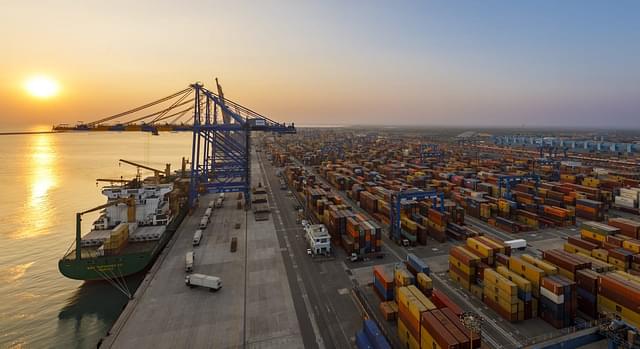
There was a siren blown out as it was the duty changing time for port workers at this coal terminal, which was our last port of call. Amid the unloading of imported coal through heavy cranes, the sun began setting across the sea at the Mundra Port.
One can see many approaching ships at the horizon of the blue deep sea, indicating that the activities of loading, unloading and berthing of ship will continue through the night, keeping the port 24-hour functional.


